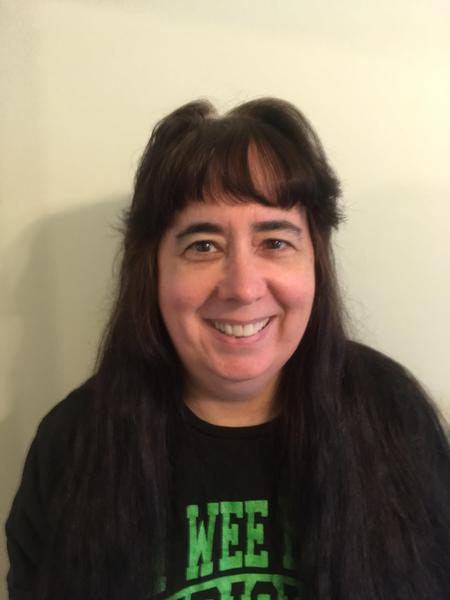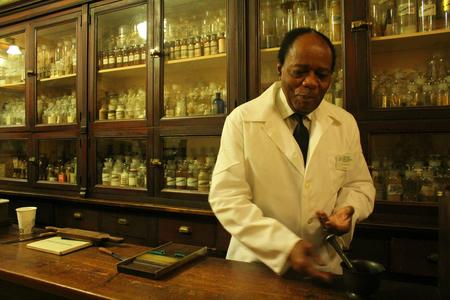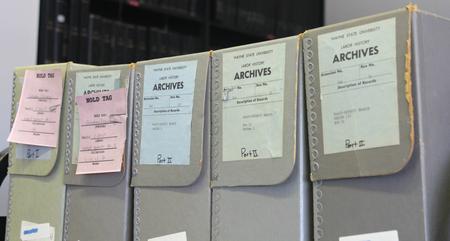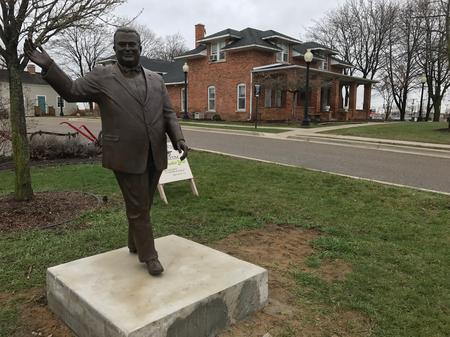CuriosiD: Did Detroit Have “Colored-Only” Signs?
Living in Detroit’s segregated past gives perspective on today.


The question for this edition of CuriosiD comes from listener Lori Nelson in Livonia:
“Please tell me there were no ‘colored-only’ signs in Detroit?” she asked WDET after seeing the film “Hidden Figures.”
Click to hear Lori ask WDET her question.
The Short Answer
WDET talked with several local historians, researchers and residents who say there’s no evidence of “Colored-Only” or “Whites-Only” signs having been posted in public places in Detroit. But that doesn’t mean segregation did not exist in the area. Unwritten — but well-understood — mandates meant that black people would not go to certain places in the metro area, and whites would avoid others.
Segregation in the City

Detroit resident Ted Van Buren is now in his 80s and remembers well the segregation he lived through in the city.
Now a volunteer at the Detroit Historical Museum, he easily offers examples of segregated places in the city during the 20th century: movie theaters on the west side of Woodward Avenue during the 1940s, hospitals and housing.
“It wasn’t blatant segregation. We didn’t have any signs or anything like that, that said ‘black’ or ‘white,’” Van Buren says. “We actually … knew there were certain places that we couldn’t go.”
His personal recollections are backed by more official records housed at Wayne State University’s Walter P. Reuther Library. Historical collections there tell some ugly versions of Detroit’s stories. For example, in 1943, riots ensued on the city’s east side after attempts to integrate the Sojourner Truth Homes. As a result, the Detroit Housing Commission mandated racial segregation there and in other public housing projects.

Eventually, that mandate was overturned by efforts like those from the Sojourner Truth Citizens Committee. Members of that interracial civil rights group picketed City Hall and the Detroit Housing Commission until then-Mayor Edward Jeffries and the City Council relented and reversed the segregation order, according to the book “Life for Us Is What We Make It: Building Black Community in Detroit, 1915-1945” by Richard W. Thomas.
The mayor and the council then tried to persuade authorities in Washington to reverse the federal segregation mandate. In addition, the local Citizens Committee members began raising money to fund their own lobbying effort.
They had some successes.
“Overwhelmed by the militant blacks in the group as well as by the fact that the city fathers endorsed black occupancy, the federal housing officials rescinded their last decision and returned the housing project to blacks,” Thomas wrote.
By 1953, records show, the city’s Common Council had established a Commission on Community Relations. The goals: To improve governmental services that “affect racial relationships; to investigate and seek to correct situations of discrimination and racial tension; and to cooperate in informational programs designs to increase mutual understanding within the community,” according to records.
While the official record provides one set of stories, people like Van Buren who lived through the era tell more personal accounts. Born in 1937, he remembers living in Detroit when racism was palpable among the citizens. That racism created a type of de facto segregation within the city. There were none of the “colored-only” signs that WDET listener Nelson asked about, but Van Buren says everyone clearly understood the unwritten rules.
“We knew for as long as you follow the rules and stayed out of certain areas that you had a pretty good chance of making it,” he says.
As an African-American man, Van Buren says there were limits to the public places he — and others — considered “safe” to frequent. When famous black people came to the city — Lena Horne and Nat King Cole, for example — he remembers them staying at a particular Y where Van Buren’s father was a manager.
“Even though they were famous, they still couldn’t got to the hotels downtown,” Van Buren says.
Van Buren remembers segregation dictated where and how people lived, worked and shopped through much of the 1900s.
“Especially out in the suburbs. At one time, you couldn’t go to Dearborn,” he says. “When Mayor Hubbard was there, he didn’t want any Afro-Americans to come into Dearborn. You were really going to get arrested if you went there,” he says.

Archived Detroit Free Press articles from 1956 report on then-Mayor Orville Hubbard coming under constant fire for his prejudices against black people in the Dearborn area.
Van Buren says there were even police codes used for racist terms.
“I mean, you probably think of BMW as a car but in Grosse Pointe, BMW meant ‘black man walking.’ That would be on the police radio so they would know that there was a black man that was walking in the neighborhood, that’s the code that they would use,” says Van Buren.
It wasn’t just in his personal life. Van Buren experienced blatant discrimination in the workplace. Van Buren was a medical lab technician in the military, and in later civilian life had the same career in Detroit hospitals. He worked at the Women’s Hospital, known today as Hutzel Hospital, where he says he encountered segregationist rules.
Click to hear Van Buren:
“If a white person needed blood, I could not give them black blood,” he says. “The bottles were marked ‘Colored,’ and the other bottles were marked ‘C’ for Caucasian, so I could not give black blood to a white person but I could give white blood to a black person, which made it kind of complicated because in the military, we just gave blood, and it didn’t make any difference.”
Attitudes and practices eventually began to change. Van Buren says de facto segregation came to a partial end when businesses and other institutions began promoting themselves as being integrated and welcoming.
“There actually used to be a little sign that was put in the window that had a black hand and a tan hand to let you know that this business accepted both black and white,” Van Buren says. “We never had to ride in the back of the bus. When we got on the streetcar, or the bus, everybody would sit anywhere that they wanted.”
Where that Leaves Us Today
Our listener, Lori Nelson, says this isn’t the answer to her question that she was expecting to hear.
Click to hear what she thought.
Today, race relations are much better around Detroit. A Detroit Journalism Cooperative survey last summer found 70 percent of metro Detroit residents think race relations are improving, with 47 percent of African Americans and 56 percent of whites describing them as “good.”
Van Buren says one of the things he enjoys about volunteering at the Detroit Historical Museum is that it’s like a family, and he sees people of multiple ethnicities come visit the museum together.
But, he says, while today he sees people spending time together without self-made borders, there’s still room for improvement for Detroit and communities everywhere.
“It’s still out there, you know, but you have to work through it,” he says. “The one thing that’s going to cure all of this is time, and you can’t stop time.”
As part of the Detroit Journalism Cooperative, WDET contributed to the award-winning “The Intersection” project, a look at the recommendations of the Kerner Commission and how civil rights-related issues of the 1960s play out today in metro Detroit. Find the work here.
WDET also produces the “Created Equal” series, which explores modern-day inequality through a historical lens. Find episodes of that podcast here.
